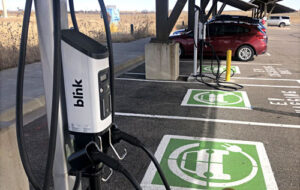Despite decades of experience, 73% of professional technicians cited a struggle with limited OE data access and other digital restrictions, not lack of skill
Rockaway, N.J.—A new national survey highlights the repair challenges facing professional technicians and DIYers in the age of advanced technology, as well as key shifts in the adoption of tools that offer integrated, platform-based diagnostics capabilities.
“Among the key takeaways is that despite decades of experience among our pro respondents, seventy-three percent cited a struggle with limited OE data access and other digital restrictions, not lack of skill,” said Chad Schnitz, Vice President of TOPDON US, which conducted the survey of more than 3,000 professional automotive technicians and DIY mechanics across North America in September.
The following are highlights from the survey.
Professional Auto Technician Survey
Sixty-six percent of those who participated in the Professional Auto Technicians survey had 10-plus years of experience with 51% having an ASE certification. Seventy-three percent said the biggest challenge facing pro technicians was limited OE data access, with 67% citing vehicle network and communication systems as the most difficult to diagnose.
In regard to hybrid and electric vehicles, 39% found challenges with battery packs, inverters and isolation faults, with ADAS coming in at 33%.
“The biggest obstacles that pro technicians face parallel the features and functions they want in their current diagnostic tools,” Schnitz said. “For example, 68% of those surveyed cited a need for more in-depth, OEM-level diagnostics and coverage. Additionally, 46% want wiring diagrams and guided repair guides, and 45% would like to have faster scan speeds.”
How pro technicians choose diagnostics tools is also shifting. Where price was thought to be the most important factor in the purchase decision, accuracy and ease of use were the top factors when choosing a diagnostic tool among those pro technicians surveyed.
Seventy-seven percent also cited YouTube as the number one source to learn about new diagnostic tools, with 57% turning to manufacturing websites.
When asked about trends shaping the future of diagnostic tools, 81% of respondents pointed to the increased use of OEM-secured gateways and encrypted vehicle systems, while 55% cited the growth of EV and hybrid vehicles requiring new diagnostic tools.
DIY Mechanic Survey
The increasing difficulty in repairing vehicles as a DIY mechanic is leading to the rise of the “prosumer” mechanic. Of those surveyed, 85% of DIY mechanics said they use a diagnostic tool to determine if they can figure out how to make the repair themselves, with 81% citing they want the ability to read and clear trouble codes.
Sixty percent said they use diagnostic tools to avoid being overcharged at a repair shop.
Nearly 90% of the DIY mechanics survey noted engine diagnostics, oil changes and fluids, brake and rotor repair and electrical or battery-related work as their most common repair or maintenance issues.
However, only 49% said they use a full-featured scan tool with 49% citing a lack of support or tutorials, and the fix still isn’t clear after reading the code is their key frustration when diagnosing a vehicle repair at home.
“Similar to pro technicians, our survey found that 74% of DIY’rs cited features and functions as the most important factor when shopping for a diagnostic tool,” said Schnitz. “We also found that features outrank both brand repuration and price. This means the tool market is shifting from legacy loyalty to merit-based trust in the prdoucts capabilities.
“The data from our survey makes one thing very clear, the future of automotive diagnostics depends on on access, education and adaptability.”













Comments are closed.